Mindfulness And Self Care for Burnout Prevention
Dr. Dawn-Elise Snipes is a Licensed Professional Counselor and Qualified Clinical Supervisor. She received her PhD in Mental Health Counseling from the University of Florida in 2002. In addition to being a practicing clinician, she has provided training to counselors, social workers, nurses and case managers internationally since 2006 through AllCEUs.com Full PDF of Presentation Slides available here:
https://bit.ly/2KjS4uK
Want to chat with me? Join me at https://members.docsnipes.com/ For $10/month you get access to my daily tips for health and wellness and you can text chat with me privately.
Buy CEU course at: https://www.allceus.com/member/cart/index/product/id/1410/c/
Dr. Dawn-Elise Snipes, PhD, LPC-MHSP
Counselor Toolbox Podcast
Objectives
- Identify signs and causes of burnout
- Explore techniques for burnout prevention
Signs of Burnout
- Physical and emotional exhaustion
- Insomnia
- Impaired concentration or memory
- Physical symptoms (heart palpitations, HBP)
- Appetite changes
- Increased illness
- Increases in depression and/or anxiety
- Absence of positive emotions
- Cynicism and disillusionment
- Lack of patience
- Lack of resilience (everything is a crisis)
- Relationship deterioration
- Substance abuse
- Forgoing important personal activities
Causes of Burnout
- Excessive workload
- Emotionally draining work
- Lack of support
- Lack of resources
- Lack of rewards
- Lack of a sense of control/say
- Unclear or everchanging requirements
- Severe consequences of mistakes
- Work/life imbalance
- Perfectionistic tendencies; nothing is ever good enough
- Pessimistic view of yourself and the world
- The need to be in control; reluctance to delegate to others
- High-achieving, Type A personality
- Poor work/person fit
Interventions: Physical
- Sleep
- Nutrition
- Easy on the stimulants
- Circadian rhythms and bright light
- Pain management
- Exericse
Interventions: Affective and Cognitive
- Set SMART goals for work
- Brainstorm ways to work smarter, not harder
- Squeegee (Cleansing) breath
- Take time to add in the positive DAILY
- Each day identify 3-5 things that went well
- Keep a scrapbook or journal of your positive experiences (no PHI)
- Perennial Garden
- Ornaments/windchimes/stepping stones/Lego wall/backsplash tile wall
- Journal
Interventions: Affective and Cognitive
- Use psychological flexibility
- To me, a rich and meaningful life is…
- Is what I am doing/thinking/feeling helping me move toward those things?
- If not, what can I do to improve the next moment
- Perspective taking
- Decision making
- Coping and emotion regulation
- Assertiveness
- Relaxation
- Cognitive restructuring
Interventions: Affective and Cognitive
- Identify the strengths and resources you do have
- Mental Agility:
- The ability to look at situations from multiple perspectives and to think creatively and flexibly. (state the other perspectives or solve from multiple approaches: cheap, fast or right)
- Practice mindfulness
- How do you feel emotionally and where is it coming from?
- How do you feel physically and what does it mean?
- What are your current thoughts and where are they coming from?
- Be aware of your trauma triggers
Interventions: Affective and Cognitive
- Develop resiliency
- Vulnerability prevention and mitigation
- Awareness of what you can and cannot control
- Distress tolerance
- Optimism and hope
- Gratitude
- Optimistic explanatory style: the ability to notice and expect the positive, to focus on what you can control, and to take purposeful action
- Character strengths: Use your top strengths to engage authentically, overcome challenges, and create a life aligned with your values
Interventions: Affective and Cognitive
- Describe why you got into the field and visualize that intention (collage, etc)—money, help, adrenaline, status/power
- Check your need for perfectionism and control
Summary
- Burnout work environments are a reality
- Burnout does not have to be
- Burnout causes problems in
- Health
- Mental Health
- Relationships
- Work environment and employee retention
- Ability to provide client services
- Develop resilience and identifying the sources and interventions for your burnout
- Work/life imbalance
- Perfectionistic tendencies; nothing is ever good enough
- Pessimistic view of yourself and the world
- The need to be in control; reluctance to delegate to others
- High-achieving, Type A personality
- Poor work/person fit
Interventions: Physical
- Sleep
- Nutrition
- Easy on the stimulants
- Circadian rhythms and bright light
- Pain management
- Exericse
Summary
- Burnout work environments are a reality
- Burnout does not have to be
- Burnout causes problems in
- Health
- Mental Health
- Relationships
- Work environment and employee retention
- Ability to provide client services
- Develop resilience and identifying the sources and interventions for your burnout
#mindfulness #burnout #mentalhealthmatters
-
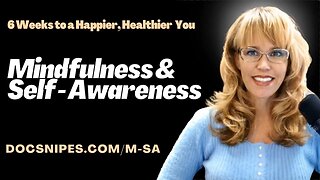 36:28
36:28
DocSnipes
3 years agoMindfulness and Self Awareness 6 Weeks to a Happier Healthier You
7 -
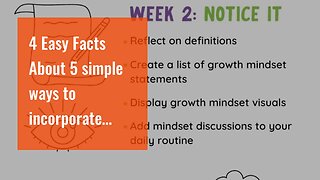 3:29
3:29
Clyde Romaguera channel
1 year ago4 Easy Facts About 5 simple ways to incorporate mindfulness into your daily routine Shown
4 -
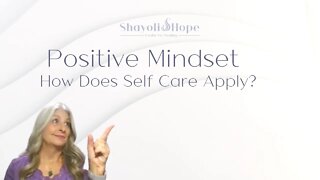 9:24
9:24
Shayoli Hope Center For Healing
1 year agoOverwhelm and Mindset Part 2, How does selfcare apply?
8 -
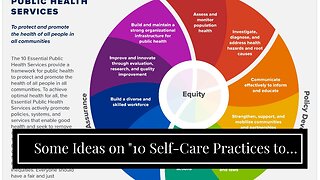 4:06
4:06
johen person channels
1 year agoSome Ideas on "10 Self-Care Practices to Improve Your Mental Well-Being" You Need To Know
9 -
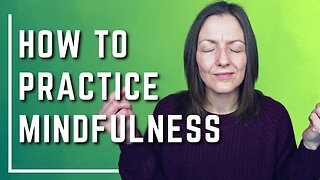 7:20
7:20
The Power Of Purpose
7 months agoMindfulness for Beginners (plus 2 Simple Mindfulness Exercises)
13 -
 3:13
3:13
HealingCoursesOnline
8 months agoCalm the busy mind. Clear the Crown Chakra, Mindfulness Technique, Energy Healing For A Busy Mind,
76 -
 3:33
3:33
johen person channels
1 year agoThe Of "10 Self-Care Practices to Improve Your Mental Well-Being"
6 -
 3:00
3:00
Mina Feil
1 year agoThe smart Trick of "5 Ways to Practice Self-Care for Better Mental Health" That Nobody is Discu...
2 -
 3:56
3:56
Gladys Kutch channel
1 year agoThe 6-Second Trick For Mindfulness meditation for beginners
1 -
 3:40
3:40
Amber Smith Channels
1 year agoHow "The Importance of Self-Care for Your Mental Health" can Save You Time, Stress, and Money.
7